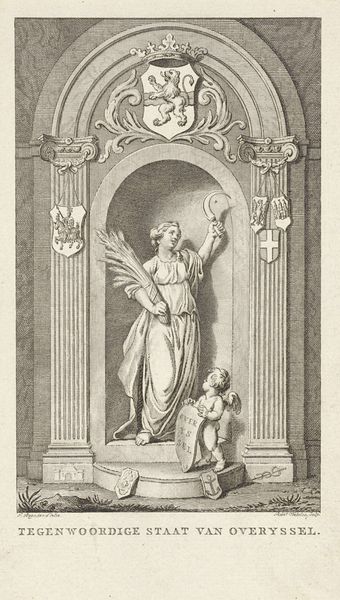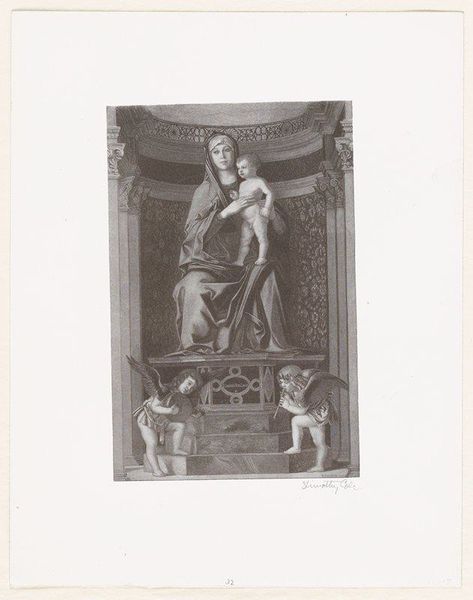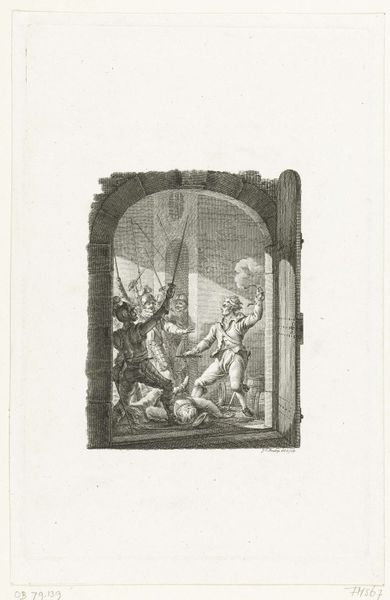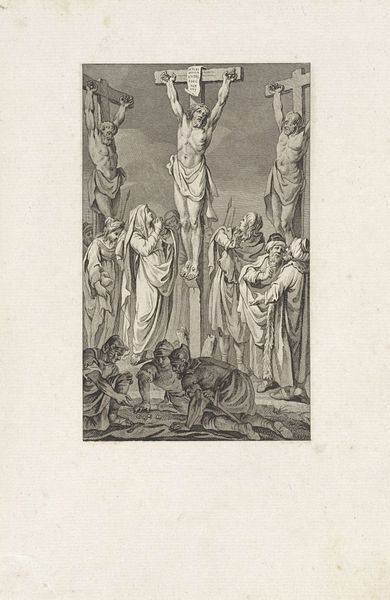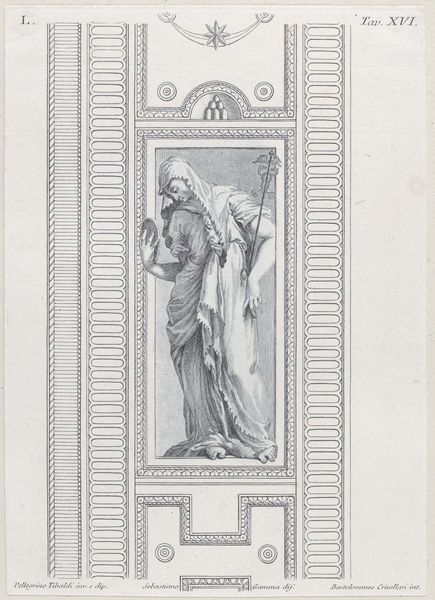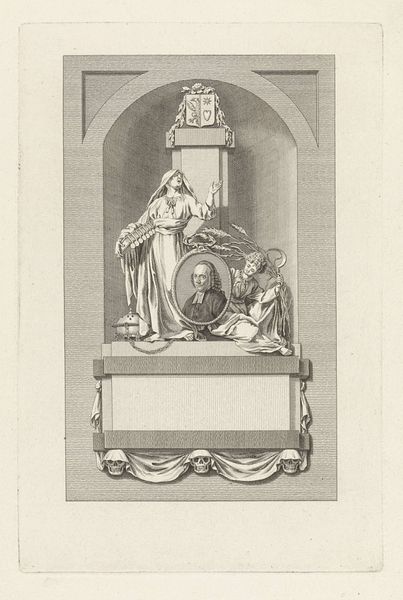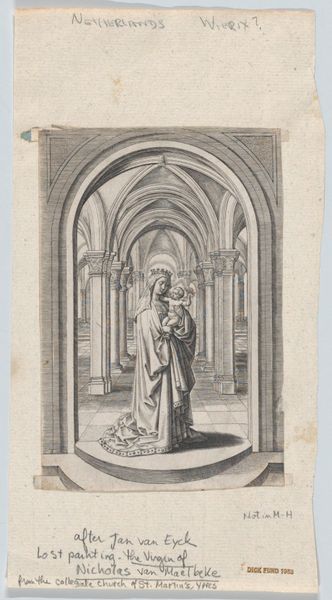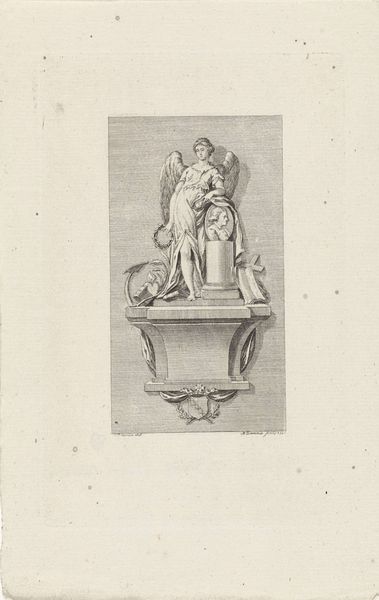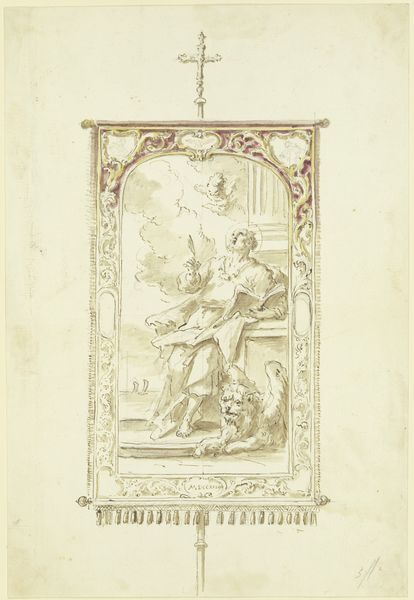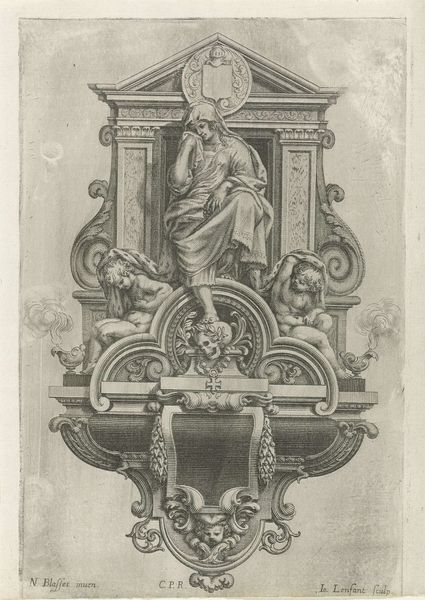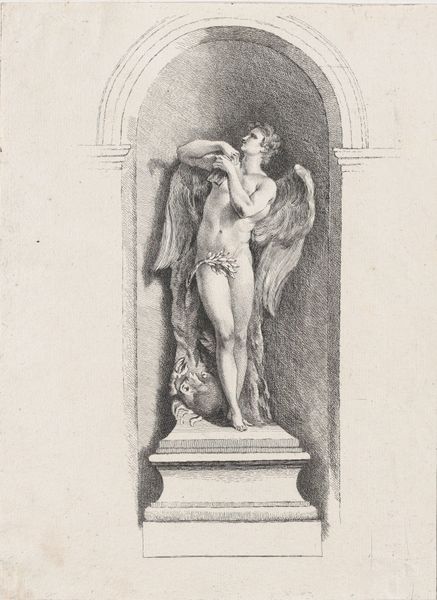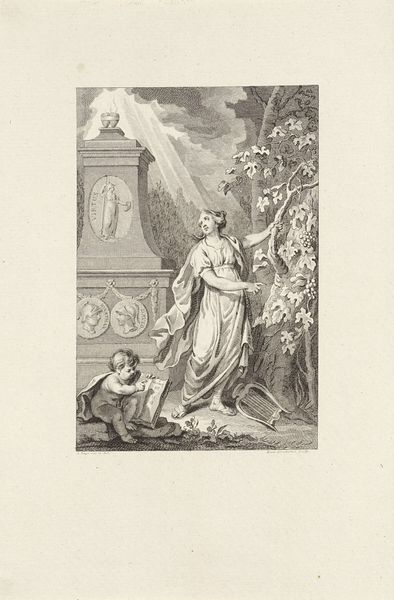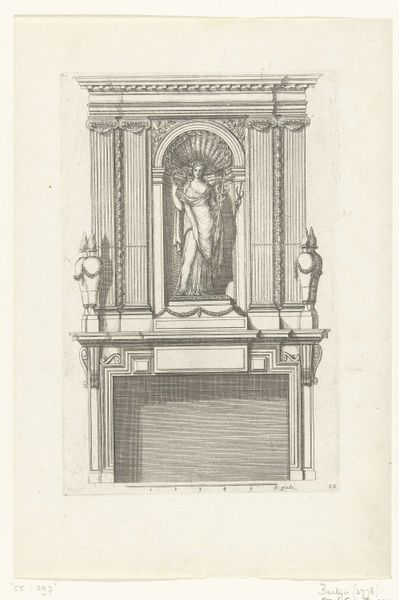
Dimensions: height 234 mm, width 150 mm
Copyright: Rijks Museum: Open Domain
Curator: Alright, let’s spend a moment with Reinier Vinkeles' "Allegory with the coat of arms of Overijssel," made sometime between 1751 and 1816. It's an engraving held here at the Rijksmuseum. Editor: Oh, I’m immediately struck by its stillness, almost sepulchral. That stark, graphic quality gives it a certain weight. All that dense hatching, so precise! Curator: Absolutely, it's an allegory, rich with symbols referencing the province of Overijssel. You see the provincial coat of arms at the very top, sheltered by that ornate arch. Note the woman—she’s an allegorical figure, probably representing the province itself, holding what looks like a liberty pole topped with a hat. Editor: A liberty cap! Yes, a symbol of freedom... or perhaps resistance? I’m curious about the printing process; what kind of paper and inks would have been available? It has that aged parchment feeling. How many impressions were made? Was it intended for a large audience, or a select elite? Curator: Interesting questions! We do know engravings like these would have been used for disseminating information, or even propaganda. The material choices speak to the desired reach of the piece. Consider how the engraving medium itself—metal plate, laborious process—lends authority. Editor: And the cupid figure holding the shield… the child seems a bit awkward. Perhaps apprentices contributed to different parts of the plate, resulting in uneven execution. I like thinking about all the hands involved, not just Vinkeles'. Curator: It's so fascinating to remember that even within "high art," there are collaborative aspects and production hierarchies. And those tiny imperfections make it more human. They let you in. The scale of the engraving allows for an incredible density of information. A monumentality, ironically, on paper. Editor: Right, it demands close inspection. Almost like holding history itself in your hands, printed in layers and time. What began as a political gesture now provides us, centuries later, this direct, intimate relationship to that very moment. Curator: It truly is. Next, let's move over to...
Comments
No comments
Be the first to comment and join the conversation on the ultimate creative platform.
